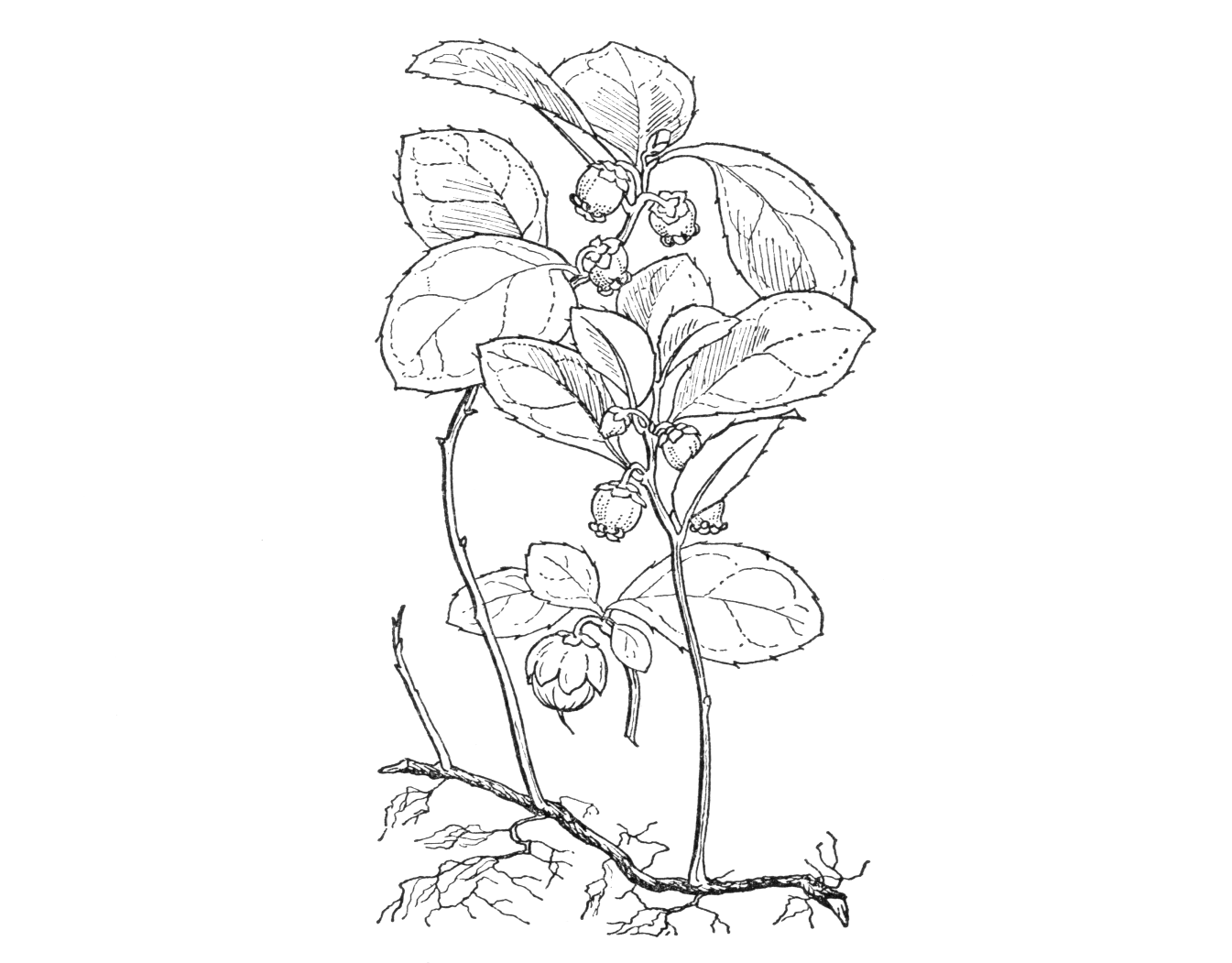Gaultheria procumbens
Credits
Article from Bean's Trees and Shrubs Hardy in the British Isles
Recommended citation
'Gaultheria procumbens' from the website Trees and Shrubs Online (treesandshrubsonline.
Genus
Common Names
- Creeping Wintergreen
Other taxa in genus
- Gaultheria adenothrix
- Gaultheria antipoda
- Gaultheria codonantha
- Gaultheria cuneata
- Gaultheria eriophylla
- Gaultheria forrestii
- Gaultheria fragrantissima
- Gaultheria hirtiflora
- Gaultheria hispida
- Gaultheria hispidula
- Gaultheria hookeri
- Gaultheria miqueliana
- Gaultheria nummularioides
- Gaultheria oppositifolia
- Gaultheria ovatifolia
- Gaultheria pyroloides
- Gaultheria rupestris
- Gaultheria shallon
- Gaultheria tetramera
- Gaultheria trichophylla
- Gaultheria wardii
- Gaultheria × wisleyensis
- Gaultheria yunnanensis
A low, tufted evergreen shrub growing 2 to 6 in. high, spreading by creeping stems, from which it sends up slender stems naked except at the top, where they carry a cluster of about four leaves; stems at first downy, afterwards glabrous. and glossy. Leaves dark glossy green, thick and leathery, quite glabrous, obovate or oval, 3⁄4 to 11⁄2 in. long, 1⁄2 to 7⁄8 in. wide, faintly toothed, the teeth often bristle-tipped; they have a strong aromatic odour and taste like that of birch, and turn reddish as winter approaches; stalk 1⁄6 in. long. Flowers produced in July and August, singly in the leaf-axils, and at the top of the stem. Corolla ovoid-cylindrical, 1⁄4 in. long, nodding, pinkish white; calyx-lobes broadly ovate, edged with tiny hairs; flower-stalk downy, 1⁄4 in. long, decurved. Fruits bright red, globose, 1⁄3 in. wide, with a pleasant, rather insipid taste. Bot. Mag., t. 1966.
Native of eastern N. America; introduced in 1762. It has there a variety of popular names such as ‘box-berry’, ‘creeping wintergreen’, and, because of the fondness of partridges for the berries, ‘partridge-berry’. An oil is extracted from it which possesses stimulating and tonic properties, but the main source of this is now Betula lenta. As a garden plant it is very pleasing for the cheerful dark green of its lustrous leaves, forming neat close tufts. It makes a pleasing undergrowth or furnishing beneath thin deciduous shrubs. Owing to the leaves in a great measure hiding the drooping flowers and fruit, its attractiveness is almost wholly in the habit and foliage.

